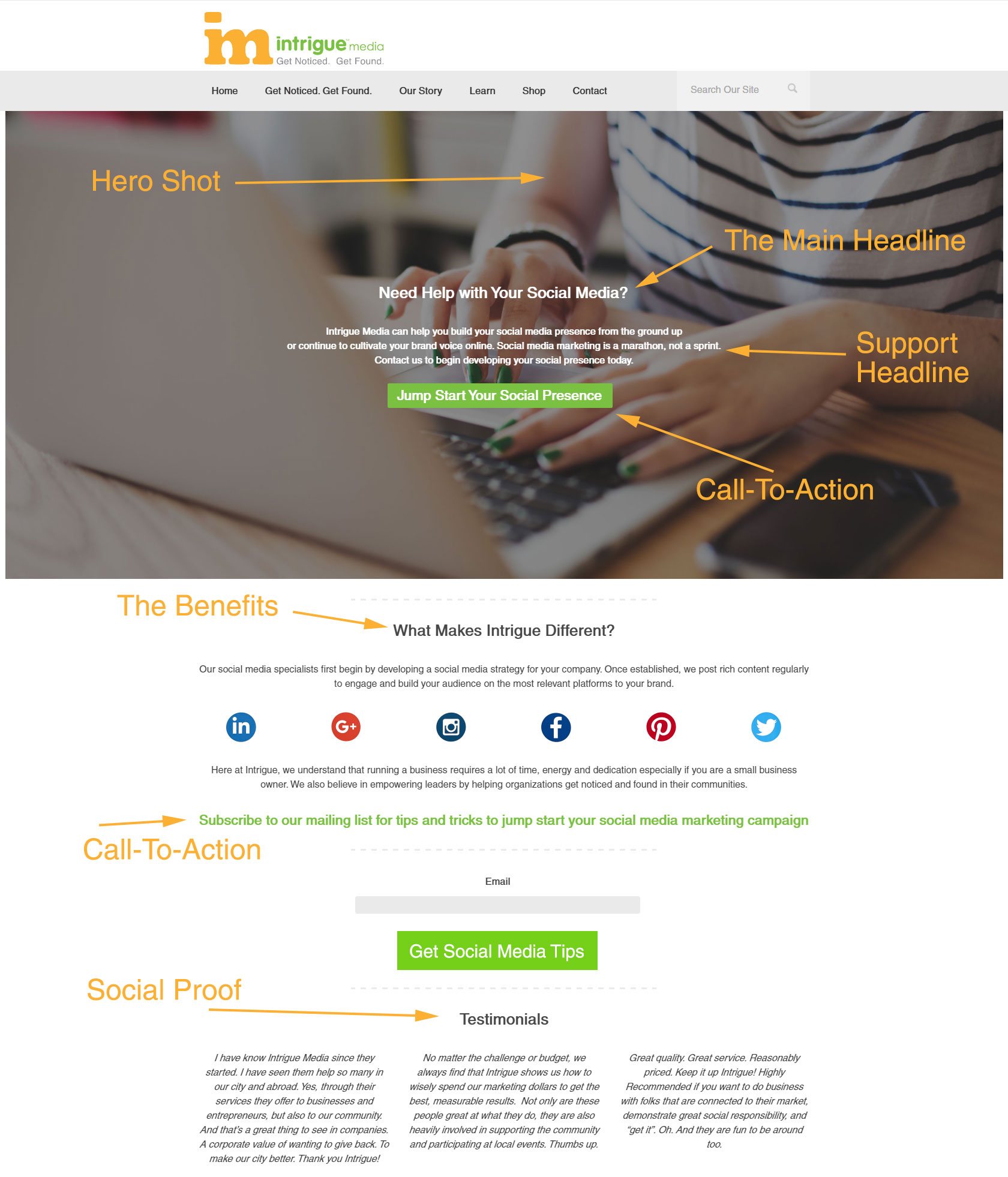By Mike Bernier
What is a Landing Page?
By definition, a landing page is any page that people can arrive on. However, when used in the context of digital advertising, a landing page is considered as a standalone page that is created for a single objective.
This single objective can be a number of things, but it is commonly meant for click throughs or lead generation.
1. Click Through Landing Pages
A click through landing page is a page that is developed to provide people with a basic understanding of a product, or to give an impression about a company. The person is then directed to click through to a page (i.e a registration page or e-commerce shopping function) so that they are able to make an informed decision and, where appropriate, make a purchase.
2. Lead Generation Landing Pages
A lead generation landing page typically offers visitors information (i.e an e-book, discount, etc.) in exchange for the person’s data (i.e name, email address, geography).
How Do I Make an Effective Landing Page?
The most important part of a landing page is to give people what they want.
The reason someone has clicked through to a landing page is because something has interested them about your offer. When creating a landing page, you need to make sure that the core of your landing page is focused on your single, consistent offer.
1. Titles
Things to consider:
- Main Headline
- This will be the first thing that any visitor will read. You need to ensure that the message is strong and consistent throughout your page.
- Support Headline
- You want to give as much detail about your offering as possible while still making this succinct and easily readable.
2. Hero Content
- The hero content on your page should help showcase the offer. A great way of showcasing the offer is to show it in use or show what it looks like. The hero content could be a photo or video, and must be consistent with the main and support headlines.
3. The Benefits
- This area can get a bit more in-depth with the offering by describing situations where it will be used and how it will help. Typically, to help readability, this section would include icons or bullet points so readers aren’t intimidated by a large chunk of text.
4. Social Proof
- Have you ever bought a product from Amazon, or maybe reached out to a service company using Google? If you have, there was a good chance your decision was based on the reviews of others. People enjoy knowing that other people have converted and were happy doing so.
5. Call To Action (CTA)
- Your CTA is the most important part of your page. It is the reason you are building a landing page. How it is designed, displayed, and interacted with will all be slightly different depending on circumstances. A bad example of a CTA would be a button that says ‘Submit’ or ‘Click here’ as it is unspecific as to what the visitor will get once that interaction has been made. In the example below, a button that says ‘Get Social Media Tips’ tells the person exactly what will happen when the button is clicked. The key to this is making the Call-To-Action, Hero Content, and Headline/Benefits all display a consistent message.

